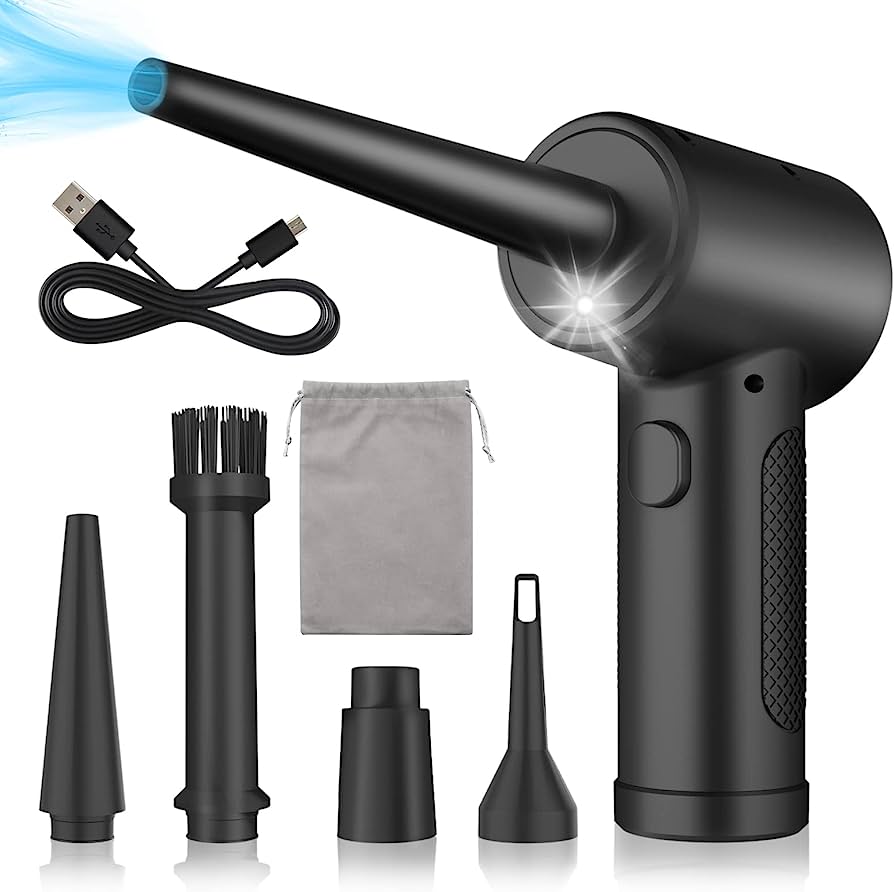Use a damp cloth to wipe down the exterior of your air compressor tank. Then, use a funnel to add clean, fresh oil to the tank. Finish by using compressed air to blow out any dirt or debris that might be in the tank.
- Unplug the air compressor and release any pressure that may be in the tank
- Remove the cover from the tank and set it aside
- Inspect the inside of the tank for any rust or corrosion
- If present, use a wire brush to remove it
- Rinse out the tank with water and then dry it completely with a clean cloth or towel
- Pour a small amount of oil into the tank and swish it around to coat the entire interior surface
- Wipe away any excess oil before replacing the cover on the tank
Contents
- 1 How to Clean Rust Out of Air Compressor Tank
- 2 Vinegar in Air Compressor Tank
- 3 Air Compressor Tank Additive
- 4 Coating Inside of Air Compressor Tank
- 5 Air Compressor Tank Oil
- 6 How to Dry Out Air Compressor Tank
- 7 Wd-40 in Air Compressor Tank
- 8 How to Weld a Air Compressor Tank
- 9 How Do You Clean the Inside of a Air Compressor Tank?
- 10 How Do I Keep My Air Compressor Tank from Rusting?
- 11 How Do You Dry Out a Compressor Tank?
- 12 How Often Should You Empty Air Compressor Tank?
- 13 Conclusion
How to Clean Rust Out of Air Compressor Tank
If your air compressor tank has developed rust, don’t despair! Rust is not only unsightly, but it can also lead to corrosion and other damage. But with a little elbow grease and the right cleaners, you can remove rust from your air compressor tank and keep it looking like new.
The first step is to empty the tank of all air and any condensation that may have accumulated. Next, you’ll need to gather some supplies. You’ll need white vinegar, a stiff brush, and some rags.
Once you have your supplies, mix equal parts white vinegar and water in a bucket. Submerge the rusty areas of the tank in the mixture and let it sit for an hour or so. After an hour has passed, use the brush to scrub away the rust.
Be sure to rinse the area well with clean water when you’re finished. If there are still some stubborn patches of rust remaining, you can try using a commercial rust remover according to its instructions.
Vinegar in Air Compressor Tank
If you’ve ever used an air compressor, you know that over time, the tank can start to develop a vinegary smell. This is due to the moisture in the air combining with the metal of the tank to create vinegar. While this may not seem like a big deal, it can actually be quite dangerous.
Vinegar is highly corrosive and can eat away at the metal of your air compressor tank, weakening it and potentially causing it to fail. So what can you do to prevent this from happening? The first step is to make sure that your air compressor tank is properly drained after each use.
This will remove any moisture that could lead to vinegar formation. You should also regularly inspect your tank for signs of corrosion and have it professionally cleaned if necessary. By taking these simple steps, you can keep your air compressor safe and free from Vinegar corrosion.
Air Compressor Tank Additive
An air compressor tank additive is a material that is added to the air compressor tank to improve its performance. The most common type of additive is a corrosion inhibitor, which prevents the formation of rust and other forms of corrosion on the tank walls. Other types of additives include anti-foaming agents, which prevent the formation of foam in the tank, and anti-wear agents, which protect the tank from wear and tear.
Coating Inside of Air Compressor Tank
Compressor tanks can develop rust on the inside, which can lead to corrosion and eventual failure. To prevent this, many companies coat the inside of their compressor tanks with a special epoxy paint. This coating provides a barrier between the metal and the air, protecting the tank from rust and corrosion.
Air Compressor Tank Oil
An air compressor tank oil is a type of lubricant that is used to help keep an air compressor cool and running smoothly. There are many different brands and types of air compressor tank oils on the market, so it is important to choose the right one for your specific air compressor model. Air compressor tank oils typically come in either a synthetic or petroleum-based formula.
Synthetic formulas are generally more expensive but provide better protection against heat and wear.
How to Dry Out Air Compressor Tank
An air compressor tank is a vital component to any air compressor system. Not only does it store compressed air, but it also helps to regulate air pressure and prevent moisture build-up. If your air compressor tank becomes filled with moisture, it can cause all sorts of problems like rust, corrosion, and even freezing.
The good news is that there are a few simple steps you can take to dry out your air compressor tank and keep it in good working condition. Here’s what you need to do: 1. Drain the tank regularly – Draining your air compressor tank on a regular basis is the best way to prevent moisture build-up.
Most tanks have a drain valve located at the bottom, so simply open up the valve and let all the water drain out. You should do this every few weeks or so, depending on how often you use your air compressor. 2. Use an oil-free compressed air source – If possible, try to use an oil-free compressed air source when operating your air compressor.
Oil creates moisture when it mixes with water vapor in the atmosphere, so using an oil-free source will help to reduce moisture levels in your tank. 3. Install a desiccant dryer – A desiccant dryer is another great way to reduce moisture levels in yourair compressor tank . These devices work by absorbing water vapor from the incoming airstream, preventing it from entering the tank .
You can find desiccant dryers at most hardware or home improvement stores .
Wd-40 in Air Compressor Tank
If you have an air compressor, chances are you’ve used WD-40 to lubricate the moving parts. But did you know that WD-40 can also be used to clean the air compressor tank? Just add a little WD-40 to a rag and wipe down the inside of the tank.
The WD-40 will help remove any build-up of dirt or grime, keeping your air compressor in top condition. So next time you’re reaching for the WD-40, don’t forget to use it on your air compressor tank!
How to Weld a Air Compressor Tank
If you have an air compressor, chances are you will eventually need to weld a tank. Here is a step-by-step guide on how to weld an air compressor tank. 1. Prepare the surface of the tank by cleaning it with a wire brush or sandpaper.
This will help the welding process and create a stronger bond. 2. Set up your welding equipment according to the manufacturer’s instructions. Make sure you have all of the necessary safety gear, including gloves and a helmet.
3. Begin welding at the top of the tank, working your way around in a clockwise or counterclockwise direction. Use short, consistent strokes and be sure to overlap each pass slightly for maximum strength.
How Do You Clean the Inside of a Air Compressor Tank?
Assuming you’re talking about a portable air compressor: To clean the inside of a portable air compressor tank, first empty the tank of any air and water. Next, mix a solution of half vinegar and half water.
Using a funnel, pour this solution into the tank and let it sit for an hour. After an hour has passed, rinse the inside of the tank with clean water to remove the vinegar solution. Finally, dry the inside of the tank completely before using again.
How Do I Keep My Air Compressor Tank from Rusting?
One of the best ways to keep your air compressor tank from rusting is to make sure that it is regularly cleaned and lubricated. If you live in an area with high humidity, you may also want to consider using a rust inhibitor. Additionally, be sure to drain any moisture from the tank after each use.
How Do You Dry Out a Compressor Tank?
Assuming you’re talking about an air compressor: One way to dry out a compressor tank is to simply let it run until all the moisture has been evaporated. This can take a while, depending on how much moisture is in the tank, so be patient.
You can speed up the process by opening the drain valve and letting all the water drain out. Once the water is gone, keep the drain valve open and let the air flow through until it’s completely dry. Another way to dry out a compressor tank is to fill it with uncooked rice.
The rice will absorb all the moisture in the tank, so make sure you use enough to cover the entire surface area. Let it sit for 24 hours before emptying out the rice and letting the air flow through again.
How Often Should You Empty Air Compressor Tank?
If your air compressor has an automatic shut-off feature, then you can leave it running until the tank is empty. However, if your air compressor does not have this feature, then you should turn it off when the pressure in the tank reaches 50 PSI.
Conclusion
If you have an air compressor, then you know that one of the most important parts of owning one is keeping the tank clean. Otherwise, your air compressor will not work properly and could even break down. Luckily, cleaning an air compressor tank is not difficult and only takes a few minutes.
To start, make sure that the air compressor is turned off and unplugged. Then, open up the tank and look inside. If there is any rust or dirt build-up, use a brush to remove it.
Once the tank is clean, dry it off with a cloth before putting the lid back on. Now it’s time to sanitize the tank. You can do this by adding a cup of bleach to a gallon of water and mixing it together.
Then, using a sponge or cloth, wipe down the inside of the tank with this mixture. Let it sit for about 15 minutes before rinsing out the tank with clean water. Finally, dry off the inside of the tank one more time before putting everything back together again.

